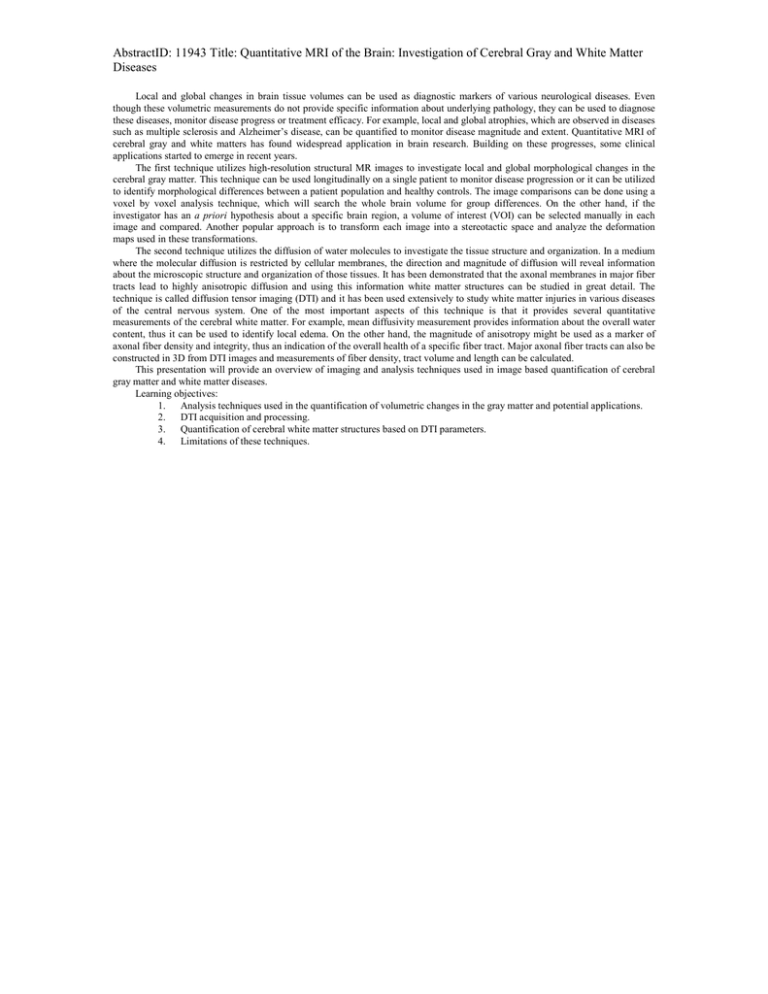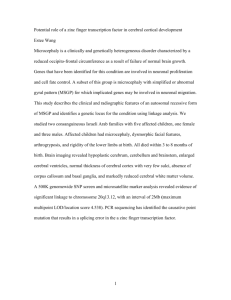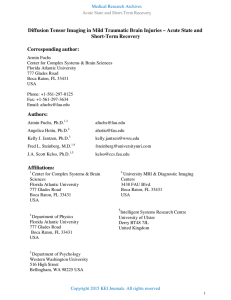Document 14364593
advertisement

AbstractID: 11943 Title: Quantitative MRI of the Brain: Investigation of Cerebral Gray and White Matter Diseases Local and global changes in brain tissue volumes can be used as diagnostic markers of various neurological diseases. Even though these volumetric measurements do not provide specific information about underlying pathology, they can be used to diagnose these diseases, monitor disease progress or treatment efficacy. For example, local and global atrophies, which are observed in diseases such as multiple sclerosis and Alzheimer’s disease, can be quantified to monitor disease magnitude and extent. Quantitative MRI of cerebral gray and white matters has found widespread application in brain research. Building on these progresses, some clinical applications started to emerge in recent years. The first technique utilizes high-resolution structural MR images to investigate local and global morphological changes in the cerebral gray matter. This technique can be used longitudinally on a single patient to monitor disease progression or it can be utilized to identify morphological differences between a patient population and healthy controls. The image comparisons can be done using a voxel by voxel analysis technique, which will search the whole brain volume for group differences. On the other hand, if the investigator has an a priori hypothesis about a specific brain region, a volume of interest (VOI) can be selected manually in each image and compared. Another popular approach is to transform each image into a stereotactic space and analyze the deformation maps used in these transformations. The second technique utilizes the diffusion of water molecules to investigate the tissue structure and organization. In a medium where the molecular diffusion is restricted by cellular membranes, the direction and magnitude of diffusion will reveal information about the microscopic structure and organization of those tissues. It has been demonstrated that the axonal membranes in major fiber tracts lead to highly anisotropic diffusion and using this information white matter structures can be studied in great detail. The technique is called diffusion tensor imaging (DTI) and it has been used extensively to study white matter injuries in various diseases of the central nervous system. One of the most important aspects of this technique is that it provides several quantitative measurements of the cerebral white matter. For example, mean diffusivity measurement provides information about the overall water content, thus it can be used to identify local edema. On the other hand, the magnitude of anisotropy might be used as a marker of axonal fiber density and integrity, thus an indication of the overall health of a specific fiber tract. Major axonal fiber tracts can also be constructed in 3D from DTI images and measurements of fiber density, tract volume and length can be calculated. This presentation will provide an overview of imaging and analysis techniques used in image based quantification of cerebral gray matter and white matter diseases. Learning objectives: 1. Analysis techniques used in the quantification of volumetric changes in the gray matter and potential applications. 2. DTI acquisition and processing. 3. Quantification of cerebral white matter structures based on DTI parameters. 4. Limitations of these techniques.





